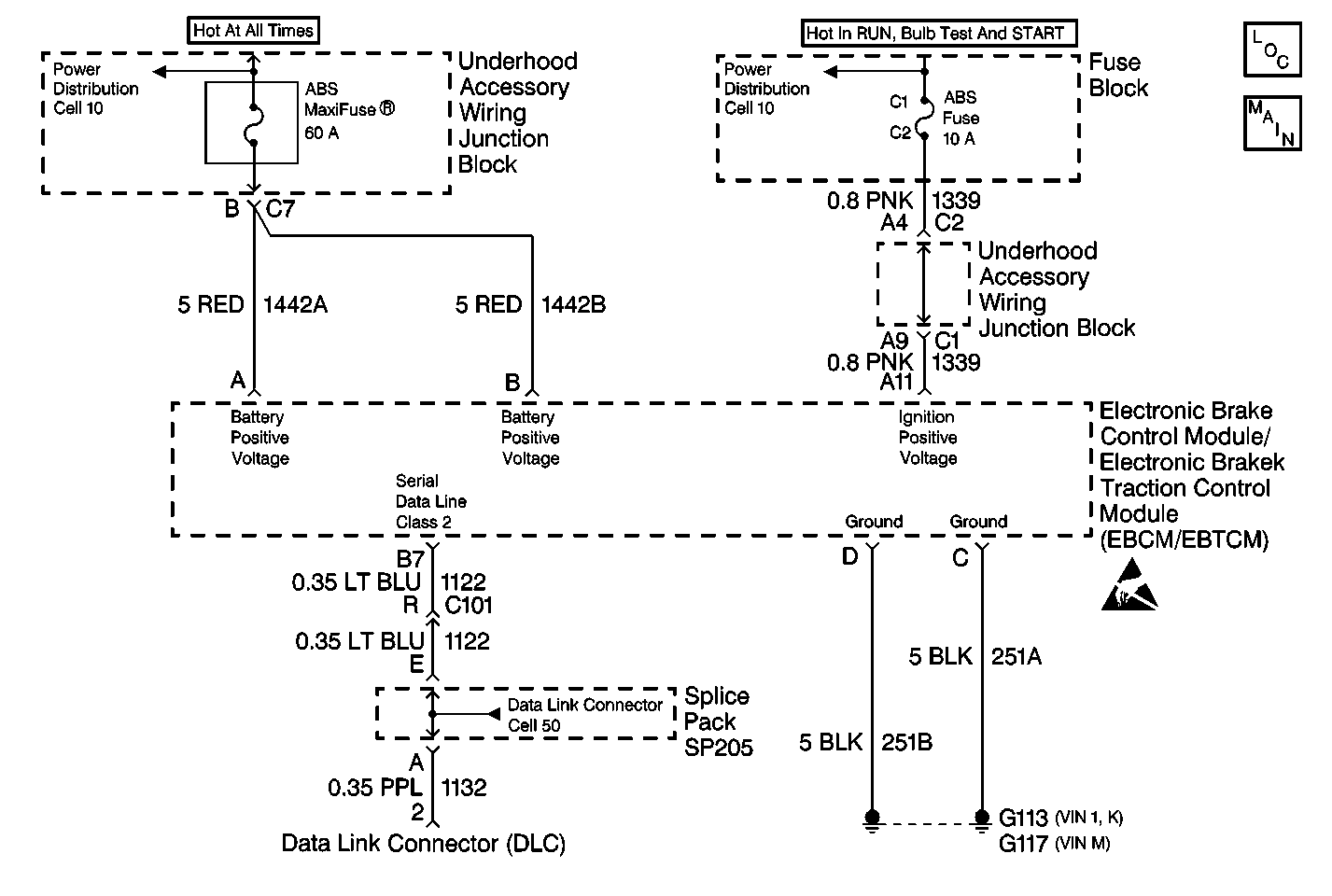
Circuit Description
The Class 2 serial data line allows all the modules on the line to transmit information to each other as needed. Each module is assigned an ID and all the information sent out on the line is assigned a priority by which it is received. When the ignition switch is turned to the run position each module begins to send and receive information. Each module on the Class 2 serial data line knows what information it needs to send out and what information it should be receiving. What the modules do not know is which module is supposed to send them the information. This information is only learned after the module has received the information it needs along with the ID of the module that sent the information. This information is then remembered until the ignition switch is turned off.
Diagnostic Aids
- The following conditions may cause an intermittent malfunction to occur:
- Inspect any circuitry that may cause the intermittent complaint for the following conditions:
| • | A poor connection |
| • | A rubbed-through wire insulation |
| • | A broken wire inside the insulation |
| • | Backed out terminals |
| • | Improper mating |
| • | Broken locks |
| • | Improperly formed terminals |
| • | Damaged terminals |
| • | Poor terminal to wiring connections |
| • | Physical damage to the wiring harness |
Step | Action | Value(s) | Yes | No | ||||||||||||||||||
|---|---|---|---|---|---|---|---|---|---|---|---|---|---|---|---|---|---|---|---|---|---|---|
DEFINITION: Scan tool can not communicate with the EBCM/EBTCM but is capable of communicating with other modules. | ||||||||||||||||||||||
1 | Was the Diagnostic System Check performed? | -- | ||||||||||||||||||||
2 | Inspect the ABS Fuse (10A) in the instrument panel electrical center. Is the fuse OK? | -- | ||||||||||||||||||||
3 |
Is CKT 1339 shorted to ground? | -- | ||||||||||||||||||||
4 | Repair CKT 1339 for a short to ground. Refer to Wiring Repairs in Wiring Systems. Is the repair complete? | -- | -- | |||||||||||||||||||
5 |
Is the voltage within the range specified in the value(s) column? | 10.0-14.0 V | ||||||||||||||||||||
6 | Repair CKT 1339 for an open or high resistance. Refer to Wiring Repairs in Wiring Systems. Is the repair complete? | -- | -- | |||||||||||||||||||
7 | Inspect the ABS MaxiFuse® (60A) in the underhood accessory wiring junction block. Is the fuse OK? | -- | ||||||||||||||||||||
8 |
Is CKT 1442A or 1442B shorted to ground? | -- | ||||||||||||||||||||
9 | Repair CKT 1442A or 1442B for a short to ground. Refer to Wiring Repairs in Wiring Systems. Is the repair complete? | -- | -- | |||||||||||||||||||
10 |
Is the voltage within the range specified in the value(s) column at both terminals A and B? | 10.0-14.0 V | ||||||||||||||||||||
11 | Repair CKT 1442A or 1442B for an open or high resistance. Refer to Wiring Repairs in Wiring Systems. Is the repair complete? | -- | -- | |||||||||||||||||||
12 |
Is the resistance within the range specified in the value(s) column? | 0 - 2 ohms | ||||||||||||||||||||
13 | Repair CKT 1122 for an open or high resistance between the splice pack SP205 connector and the EBCM/EBTCM connector. Refer to Wiring Repairs in Wiring Systems. Is the repair complete? | -- | -- | |||||||||||||||||||
14 |
Is CKT 1122 shorted to ground? | -- | ||||||||||||||||||||
15 | Repair CKT 1122 for a short to ground. Refer to Wiring Repairs in Wiring Systems. Is the repair complete? | -- | -- | |||||||||||||||||||
16 |
Is the resistance within the range specified in the value(s) column? | 0 - 2 ohms | ||||||||||||||||||||
17 | Repair CKT 251A or 251B for an open or high resistance. Refer to Wiring Repairs in Wiring Systems. Is the repair complete? | -- | -- | |||||||||||||||||||
18 |
Are there any signs of poor terminal contact, corrosion or damage terminal(s)? | -- | ||||||||||||||||||||
19 | Replace or repair all of the terminals and/or connectors that exhibit signs of poor terminal contact, corrosion or damage terminal(s). Is the repair complete? | -- | -- | |||||||||||||||||||
20 | Replace the EBCM/EBTCM. Refer to Electronic Brake Control Module/Electronic Brake and Track Control Module Replacement . Is the replacement complete? | -- | -- | |||||||||||||||||||
